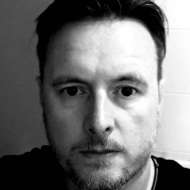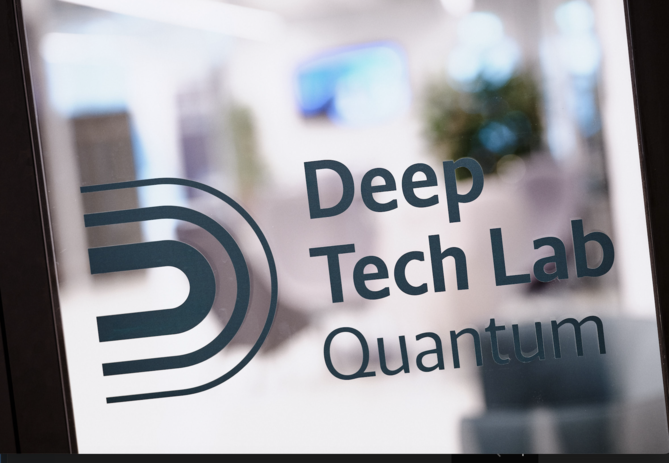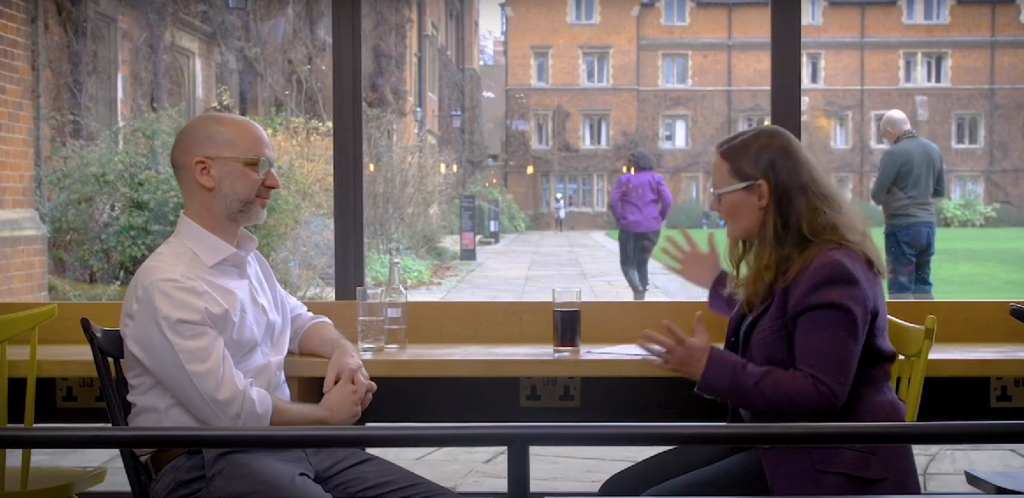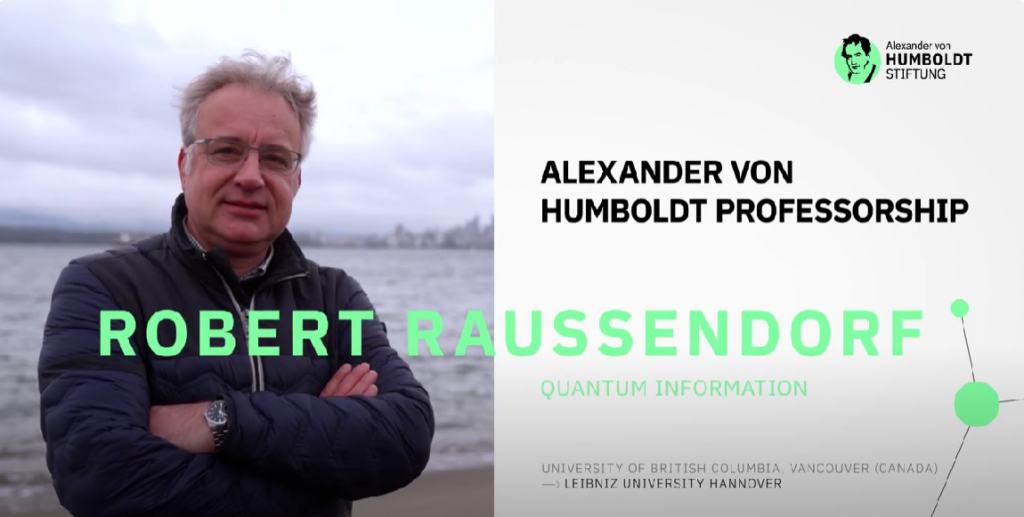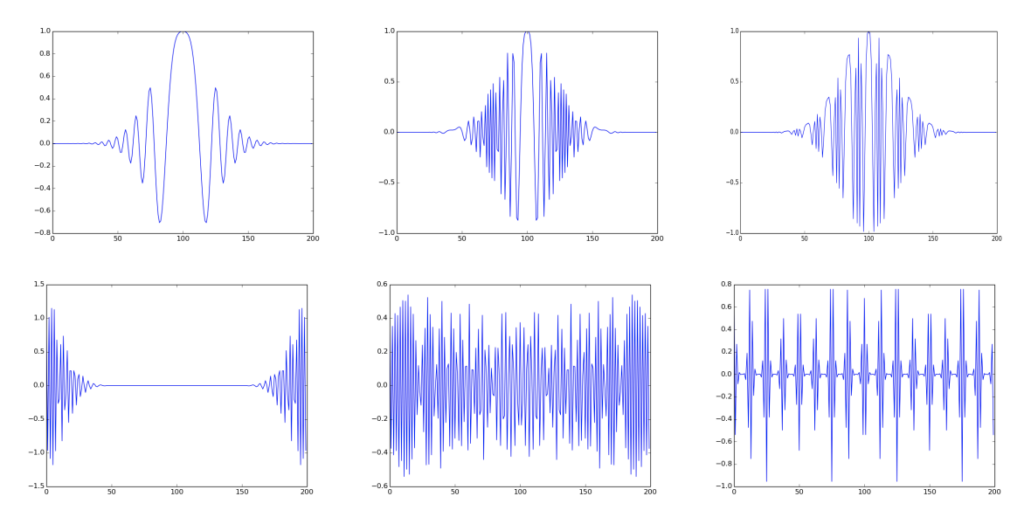Quantum computing books listed below, which I have read in their entirety, were all a challenge bar one.
They span the theoretical implications of quantum computing to programming, with smatterings of the history in the space, too. They are also recent offerings published in either 2018 or 2019) with the exception of Scott Aaronson’s book, as I thought such a disruptive industry as Quantum computing needs publications as up-to-date as possible.
Some books are of better literary quality while others give you the know-how needed to understand the more demanding aspects of quantum computing. And these 7 best quantum books listed below, well, they just shine through regarding both style and content, reaching the ultimate golden-mean.
So let’s start!
You may also like:
- Top 8 Online Quantum Computing Courses
- Top 18 Institutions Leading Quantum Computing Research
- Top 12 Quantum Computing Universities
- Top 20 Quantum Computing Masters & Ph.D. Degree Programs in 2024
7 Best Quantum Computing Books
1. Quantum Computing for Everyone (The MIT Press) 2019
What better quantum computing book to kick off the list than Chris Bernhardt’s Quantum Computing for Everyone, published in 2019 by The MIT Press. Bernhardt, a British professor of mathematics at Fairfield University, Connecticut, tries and succeeds in introducing the uninitiated to the strange world of quantum computing.

As a mathematician by profession, it is surprising the man’s grasp on quantum physics. In Chapter Two, though, Linear Algebra, the inevitable happens and the mathematician takes over with its number-heavy descriptions. Just shy of 220 pages, the book does a good job of making many of the concepts of QC accessible.
Bernhardt’s book is divided into nine chapters:
- Spin
- Linear Algebra
- Spin and Qubits
- Entanglement
- Bell’s Inequality
- Classical Logic
- Gates, and Circuits
- Quantum Gates and Circuits
- Quantum Algorithms
- Impact of Quantum Computing
Each topic is introduced ‘clearly’, in a prose that is ‘maths/physics-heavy’ though containing a fluidity that is both poetic and educational at the same time. The author intentionally keeps the content ‘accessible’ for the non-specialist while still managing to educate at the same time. The simple black and white diagrams, which are generously dotted throughout the book, add simplistic meaning to the opaqueness of the topic.
A bonus point.
[…] it should be emphasized that this book is about the theory of quantum computation. It is about software, not hardware.’
— Professor Chris Bernhardt, Quantum Computing for Everyone
Bernhardt, then, manages to eradicate some of the forbidding concepts of QC with a simple stroke of his pen. Like a hero of mine, Richard Feynman, he ‘humanizes’ the subject, altering the impossible — well — as in the title, for everyone.
Usually, I’m beaten at first base by some of the articles on QC I’ve tried reading in publications like Quanta and New Scientist detailing some of the harder concepts of QC. Maybe it’s science journalists or Ph.D. candidates trying to make a name for themselves via those portals, believing the more difficult they make the idea they’re trying to sell, the better they will be seen by the wider scientific audience.
And that may be true.
Complex symbols, numbers et al are few and far between in this book, though a caveat to that is some of the harder, yet essential, theories of QC like Shor’s Algorithm get skimmed over.
For those who have the book intending to get a basic run-through of QC, that is not an altogether bad thing. He views the new scientific paradigm as something that should be accessible to all and everyone, not just people like in his milieu.
Some would argue — and these are people with no mathematical or physics background at all, not even to high-school level — that the book’s title is not for everyone, though.
And maybe they’re right.
For those who have never heard of ‘Dirac algebra’ or ‘Fourier transforms’ and other ‘basic’ tenets of quantum physics, Quantum Computing for Everyone is going to be a hard slog. It is a superficial overview, but rather one for a snotty-nosed undergraduate with enough education to know they’re smart enough to know they don’t know shit.
Quantum Computing for Everyone, though an excellent book, is not ‘for everyone’. It’s for the reader who has been on the QC journey for at least a few years, a maths graduate from high school with a reasonable grasp of classical physics, an individual willing to go that extra mile to integrate their tech knowledge with a future career in the space.
You may also like: What is Quantum Computing? [Everything You Need to Know]
2. Dancing with Qubits: How quantum computing works and how it can change the world (Packt Publishing) 2019
The next between the books on quantum computing is Dancing with Qubits: How quantum computing works and how it can change the world by Robert S. Sutor, a man who needs no introduction. Sutor, a mathematician by profession who gained a Ph.D. from Princeton University, has been a leading light in innovative industries for more than three decades, while for twenty of those he has been working at IBM Research on several different areas of technology, including research on AI, the blockchain and mathematical computation. His best work, though, can be seen in what he has contributed to QC over the last decade.
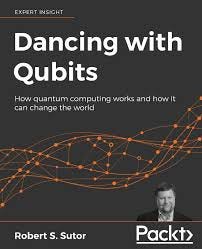
If you want to learn, then you should learn from the best, and there is no better teacher than Sutor in the industry.
The first thing I should state about the book is the introduction is as clear as it can be, giving precise but simply presented information on the basic principles of mathematics and physics and how they correlate to quantum computing.
The book’s preface begins with the great Danish quantum physicist Niels Bohr’s proclamation that ‘everything we call real is made of things that cannot be regarded as real.’ It’s a taste of things to come. Divided into two main parts, ‘Foundations’ and ‘Quantum Computing’, which have their respective subsections including the aptly titled ‘moving to two dimensions’, ‘the fundamental functions’, ‘matrix algebra’, and ‘the quantum z gate’, Sutor runs the whole gamut of theoretical implications and practical applications for QC in an easily accessible narrative.
Like Bernhardt’s book, the author assumes the reader has fundamental knowledge of the basics of physics and mathematics, at least to the level demanded by a first-year university student or a high-end high school geek.
This book would be good as a coursebook as well as for the student who prefers learning independently.
Black and white diagrams abound (there’s even a photo of Richard Feynman), clearing up, via visual models, some of the more difficult concepts.
If Sutor ever gets fired from his job at IBM, he could quite easily take up a career as a writer. His style is tight, entertaining and philosophically weighted while devoid of any of the patronizing bile that is common in many of the academic books and Ph.D. papers.
You can read Matt Swayne’s review after speaking with Sutor here.
3. Quantum Computing: An Applied Approach (Springer) 2019
Another book from 2019 is Jack D. Hidary’s Quantum Computing: An Applied Approach, currently the best-selling book on Amazon on the list. The author leads a team at Alphabet/Google focused on quantum tech and is a technology researcher and entrepreneur, and has been coauthor on many more quantum computing books. The style is excellent but I feel, unlike Sutor’s offering — or, in fact, the book by Bernhardt — a lot of the information is too technical (this is not the author’s fault, however, but the mine as a reader). Yet so it should be, as it’s used in as a primary coursebook in masters and Ph.D. programs at the University of Waterloo and other universities.

Hidary, who studied philosophy and neuroscience at Columbia University, is now focused on the nexus of quantum technologies and AI at Google. With a business career stretching back twenty-five years, he’s well-placed to discuss all things futuristic. Additionally, he has given more than 30 lectures on quantum computing at universities such as Oxford, Cambridge, Imperial College London, Bristol, MIT, and Stanford.
Like in the other books, the preface and contents are presented clearly, as well as the main thesis.
The three head chapters are divided as such: (I) Foundations (II) Hardware & Applications (III) Toolkit.
Sub-sections to these include ‘binary and ternary operators’, ‘the Bloch sphere’, ‘quantum walks’, ‘tensor networks’, ‘the dot product’, and ‘basic set theory’ are all well explained. Like the other books in the space, it is maths-heavy but focuses on how QC can be applied in today’s commercial world, which may attract readers with a business bent. This should have been expected from someone with as much sagacious entrepreneurship as Hidary. This book, then, makes a good accompaniment to the other publications of the quantum computing books on the market.
For STEM freshmen with an enthusiasm for the coming tide of QC, this is essential reading. For the senior at college majoring in quantum physics with an internship at IBM or Honeywell next summer, a great choice, too.
4. Quantum Computing since Democritus (Cambridge University Press) 2013
We come to the old school with our next book on quantum computing. 2013 is an age ago in terms of how QC has developed. At the time, the landscape was pretty bare: startups like D-Wave Systems, 1QBit and M Squared Lasers ruled the roost as far as startups went. IBM and a few others represented the big guns.

If anyone deserves the epithet of a ‘quantum guru’ these days– by that in terms of academic credentials, social media influence and just the way he conveys the message of quantum information science — it has to be Scott Aaronson, professor at the University of Texas at Austin and former MIT faculty member. He is also the founding director of UT Austin’s new Quantum Information Center.
But his acclaim in the industry doesn’t stop there: his popular blog, Shtetl-Optimized, is gaining readers daily and is sure to be one of the go-to sources for all things quantum-related in the coming years.
So it is on the wave of this acclaim that we come to Aaronson’s book Quantum Computing since Democritus, at 404 pages one of the longer publications on the list.
The book is divided into twenty-two chapters, each one written in a prose which is a delight to read, even conversational in tone. For many, especially with a dry scientific bias, this could be off putting. Not for this reader, though. It reminded me of the pace of a Feynman lecture: ingenious insight with a clownish tint. One thing I particularly enjoyed about it was the titles to the chapters, from Chapter One’s ‘Atoms and the void’, Chapter Five’s ‘Palecomplexity’, Chapter Eighteen’s ‘Fun with anthropic principle’ to Chapter Twenty-two’s ‘Ask me anything’. It shows the author has a sense of humour, as well as a first-class scientific mind.
‘The book is [also] too wide-ranging, breezy and idiosyncratic to be used much as a textbook or reference work. Sure, it has theorems, proofs and exercises, and it covers the basics of an astonishing number of fields: logic, set theory computability, complexity, cryptography, quantum information, and computational learning theory, among others…’
— Scott Aaronson, Preface to Quantum Computing since Democritus
While lacking illustrations, Aaronson’s unique ability to explain difficult concepts in QC is a treat. This is one of a few quantum computing books that you should read regardless of wheater you have an interest in QC.
Early chapters of the book are dedicated to logic, with a focus on Turing’s legacy, the Completeness and Incompleteness Theorems of Kurt Gödel and all those other fundamental principles any self-respecting computer science student needs to know.
It is only later, more than one quarter through the book in the chapter ‘Quantum’ that — you guessed it — quantum gets a mention. This could be disappointing for those who expect it from the very first page, but when it comes, there is no disappointment.
The usual suspects of quantum theory are mentioned: hidden variables, decoherence, entanglement and even Hugh Everett III’s amazing many worlds/multiverse theory is given a spin. Stochastic proofs, too, the intricacies of quantum algorithms and some meanderings into philosophy and cosmology in the later chapters give you a sense Aaronson doesn’t want to leave a stone unturned.
Or if that’s not the case, it’s just his excuse to present the power of his intellect to the reader.
To summarize, then, an excellent book. A lot of computational complexity theory and maths to deal with, and not for the average Joe, but if you want to expand your knowledge of QC while gaining an understanding of other related fields, Quantum Computing since Democritus is an excellent starting point.
5. Quantum Computing for Babies (Baby University) 2018
This next one is just on my intellectual level. Written by award-winning physicist and senior lecturer for quantum software and information at the University of Technology Sydney, Chris Ferrie — in collaboration with that QC evangelist and entrepreneur William ‘whurley’ Hurley — the board book Quantum Computing for Babies is a tour de force of simplicity explaining complexity. Part of a series of educational science books by the author that includes Quantum Physics For Babies and Astrophysics For Babies, as in the title, it’s written for babies/toddlers or those adults so intellectually impaired they don’t know an atom from their backside.
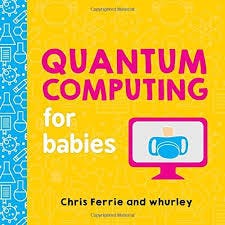
Jokes aside, though, the short book gives a great summary of what QC is, describing in simple sentences with the help of colourful diagrams the difference between bytes and qubits. For young children, it’s a must.
Disclaimer:
By the end of the book, though ‘adults’ won’t be able to solve ‘the travelling salesman problem’ anytime soon, they will have a fundamental grasp of what QC is. A truly educational book and an essential purchase for any parent out there who wants their progeny to get a headstart in the STEM subjects.
6. Quantum Computing for beginners: A Complete beginner’s guide to Explain in Easy Way, History, Features, Developments and Applications of New Quantum Computers that will Revolutionize the World (self-published) 2024
Simon Edwards’ Quantum Computing For Beginners: A Complete beginner’s guide to Explain in Easy Way, History, Features, Developments and Applications of New Quantum Computers that will Revolutionize the World was published in January of this year. Long in title but short on content, at 165 pages, it’s a slim work comparing it to others on the list.

Now, before I go into the bones of the book, one needs to detail — like I have done with all the other quantum computing books so far — some biographical data on the author, Simon Edwards.
Unfortunately, there is none. Neither on the publisher nor the author’s credentials.
Not a trace.
He seems to be the Thomas Pynchon of the QC world. I had presumed before I purchased the ‘free’ copy on Kindle Unlimited it was a self-published effort. That doesn’t usually put me off, especially with literature. I’m a partly self-published author myself and have profited well off it in the past (though not so much anymore). When it comes to science books, however, my skepticism boots in.
Academics and popular scientists usually go through the well-tread channels of the university presses or one of the big five of Hachette, HarperCollins, Macmillan, Penguin Random House or Simon & Schuster.
Quality control is a must.
But I was willing to give it a go, because, well, why not?
And it was FREE.
Edwards’ book is split into fourteen chapters, many of them posed as questions:
- What is Quantum Computing?
- Are Quantum Computers a Reality or Just a Scientist’s Dream?
- Why Quantum Computing?
- How Quantum Computers Will Work?
Blah blah blah.
The book, considering it’s probably a DIY affair, is not a bad attempt at dissecting some of the harder issues of QC.
Although not on par with the others on the quantum computing books list (for obvious reasons), there is a clarity in the simplicity of presentation that is lacking in the books by the academics I have featured.
On a down note, a few typos and grammatical errors make the reading experience clunky at times but he who is without sin should read John 8:7 for a bit of enlightenment.
7. Programming Quantum Computers: Essential Algorithms and Code (O′Reilly) 2019
Co-authored by Eric Johnston, Nic Harrigan, and Mercedes Gimeno–Segovia, Programming Quantum Computers: Essential Algorithms and Code Samples gives you all the knowledge you need to program a quantum computer. At three hundred pages, it’s a well-detailed publication giving you the ins-and-outs of programming a quantum computer.
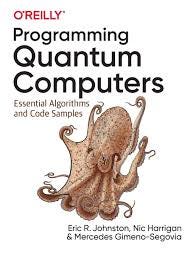
The authors’ credentials are strong, lending weight to the book:
Eric Johnston is a code optimization specialist. Education-wise, he has a B.S. in electrical engineering and computer science from U.C. Berkeley.
Nic Harrigan, meanwhile, has over ten years of experience in the field of science communication.
Mercedes Gimeno-Segovia, the appointed ‘quantum brain’ of the book, is a quantum physicist whose focus is the next generation of quantum technologies. She gained her Ph.D. from Imperial College London.
This diverse publishing team, with its unique skill set, has its head screwed onto the needs of the intermediate programmer by doing a great job of explaining some of the key concepts of the subject in a clear and accessible way. Seeing as I’m neither a computer programmer nor a quantum physicist by profession, some of the more difficult concepts were hard to follow without reading some passages multiple times.
‘The heart of this book focuses on building an intuition for a set of quantum primitives — ideas forming a toolbox of building blocks for a problem-solving with a QPU.’
— Programming Quantum Computers: Essential Algorithms and Code
The book is split into three parts:
Part 1: Programming a QPU
Part 2: QPU Primitives
Part 3: QPU Applications
Graphic designer Rebecca Demarest supplies professional illustrations and diagrams throughout the book, each one detailing visually the scientific hypothesis of what the authors are trying to convey.
To be honest, as long as you have an IQ of over 110, and understand Boolean algebra and gates and other ‘entry-level’ stuff, you should be well on your way as a pre-knowledge of quantum physics and high-level theoretical mathematics is not essential.
I recommend Programming Quantum Computers for those computer science majors wanting to explore QC programming as a potential next move in their careers. In that respect, there are few better quantum computing books on the market.
I really enjoyed it, though at times it was difficult to follow a lot that was going on. Quite a few weeks of hard slog, made possible by the COVID-19 lockdown and my insatiable will to learn more about quantum computers and how they work.
As we move into the third decade of the 21st century, TQD is sure QC will play an ever more important role in the technological landscape. And as it does, and as more people become qualified to talk about the space, more quantum computing books will be published: On the history of QC, on coding, on the hardware side of things and how quantum information science can work with business to optimize such spheres as the financial industry, logistics and pharma.
ATTENTION: Two more great books on the space, Seth Lloyd’s Programming The Universe and Quantum Computers by Jon Schiller are covered in a post here from Quantum Multiverses. Please feel free to take look!
TQI Summary
We came to the end of our journey through the exciting world of quantum computing books. To sum it up, quantum computing books are gaining much more on their expertise and relevance and are becoming the perfect way to learn about quantum computing nowadays.








